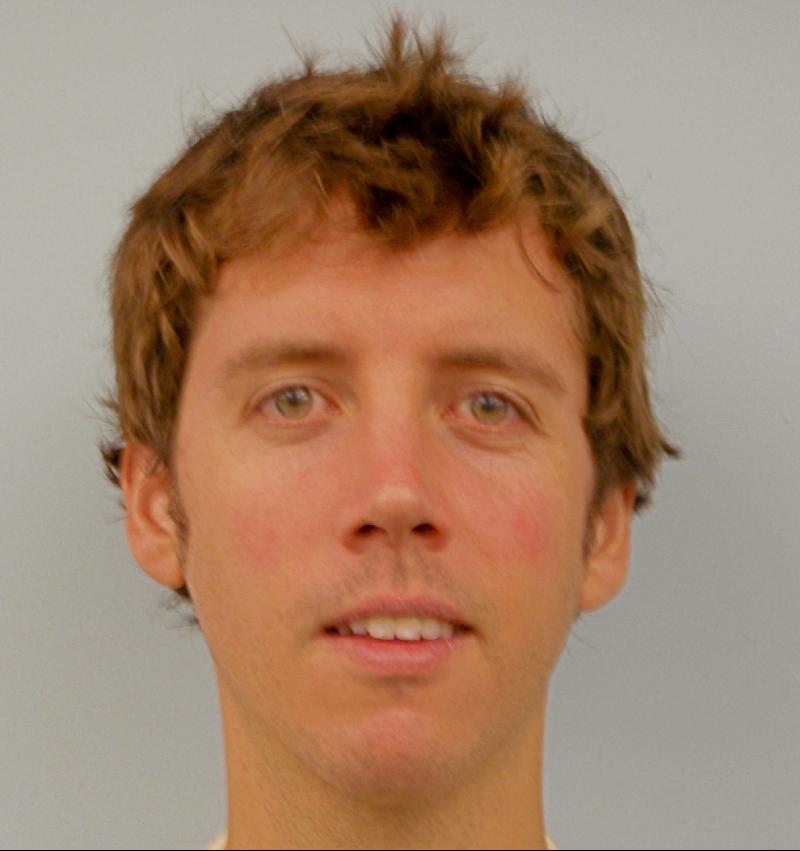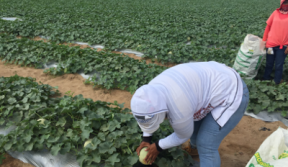February 23, 2016


Kirk Allison responds to the question of “What can make us and our organizations more effective in trafficking intervention and response?”


“We support workers and workers’ representatives in multiple ways: provide skills training so they have better grasp of laws and conventions that regulate their work; and help our partners develop strategies that address problematic conditions that they face”,


Human Trafficking and Smuggling
2015 – Course Highlights
It has been 15 years since the adoption of the United Nations Trafficking and Smuggling Protocols and one can argue that improvements have been made on the forefront of combatting modern day slavery, but still much work is left to do. The turbulent times we live in require special measures and a creative way forward to address the issue.
Taught by Kirill Boychenko, the course on Human Trafficking and Migrant Smuggling was offered via Human Rights Education Associates (HREA) for its third consecutive year and gathered four experts who reflected upon their experiences and provided insights on the challenges and responses to the issue of modern day slavery.
Eva Biaudet, a politician with 16 years of experience in the Parliament and Government of Finland, has been working on the issue of human trafficking throughout her political career.
“Working on the national and international levels, I’ve seen the way anti-trafficking legislation is shaped,”

says Eva Biaudet, who in addition to being a legislator also served as a Finnish Ombudsman for Minorities; the National Rapporteur on Human Trafficking in Finland and the Organization for Security and Co-Operation in Europe (OSCE) Special Representative on Combating Trafficking in Human Beings.
Some of the issues encompassing trafficking are shared among all countries. The culture of disbelief is one example. It is very difficult to believe victims’ stories and there are reasons for that. It is hard even for experienced first responders to fathom some of the horrific trafficking narratives that survivors share with them.
“One Norwegian police officer told me, that if you believe that trafficking exists in your community, then you start to recognize it”,
Eva Biaudet shares her experience of working with the law enforcement.
Most of the law enforcement officers who were interviewed for the 2012 U.S.-based anti-trafficking research, conducted by the course instructor Kirill Boychenko, explained: the more they look for trafficking – the more they are able to see and investigate. Training for law enforcement officers should never be at a deficit as it drives successful investigations.
We repeatedly hear that trafficking is a hidden or latent crime. It is very difficult to identify but proper training enables first responders to see and distinguish this crime among other situations. This is especially true for sex trafficking, which should not fall below the radar when attention is shifted to other forms of trafficking, such as labor trafficking.
Challenges surrounding modern day slavery that Eva Biaudet was solving on the international level (as OSCE Special Representative on Combating Trafficking in Human Beings) she also witnessed on the national level (as a National Rapporteur on Human Trafficking in Finland). Even if you don’t recognize trafficking, it may still be happening around you.
“Human rights approach towards trafficking victims is of interest to everyone, including law enforcement”,
Eva Biaudet explains that in the urge of investigation, law enforcement officers wave-off everything else as they go after criminals, however, when a human rights approach is in place, it greatly enhances the chances of solving crimes by building the necessary rapport and trust with the survivors.
The problem of men and boys’ exploitation is often on the far margins of anti-trafficking response. According to UNODC, the percentage of exploited men and boys is increasing compared with the past years. Generally, exploitation of a younger person and minorities is a growing problem.
“Even in a place like Minnesota (U.S.), which is famous for having high standards of social and health services, we have great health disparities among minority populations. Extortion is reported in the Horn of Africa communities in the Twin Cities area,

Kirk Allison – PhD, Director of the Program in Human Rights and Health in the School of Public Health University of Minnesota
One possible way to identify trafficking within minority populations is by establishing an institute of “cultural mediators” who can help translate what counts as normal and what is out of place in the communities and ethnic diasporas. This tool may bring together communities and law enforcement, enhancing the three “P” paradigm (prevention, protection and prosecution). A forward-minded initiative of recruiting “cultural mediators” envisaged by France in its first National Plan of Action against Trafficking in Human Beings for 2014-2016.
Kirk Allison responds to the question of “What can make us and our organizations more effective in trafficking intervention and response?”
“The same things that might keep you alive in a conflict zone:
• Environmental and situational awareness;
• Remember, you are likely to see what you know;
• Have a plan on what you will do when you come across of someone who has been trafficked (know organizations and contacts where to go and whom to call)”
Having an action plan or a crisis management plan becomes imperative when you and your organization’s partners are backlashed for trying to stop slavery-like practices.
In September 2015 alone, three of International Labor Rights Forum (ILRF) partners in Uzbekistan were arrested; two of them were detained and subjected to abusive searches for standing up against state-imposed forced labor on Uzbek cotton fields.
At some point in our lives, we all wear clothing made of cotton. Cotton is one of the biggest commodities in the global trade and Uzbekistan is one of the world’s main producers of cotton (harvesting about 3.5 million ton of cotton every year).
“A lot of people that we work with, face retaliation for the human rights work that they do from their own governments and in some cases by other actors. In Uzbekistan our partners who work on the ground and monitor cases of forced labor – face retaliation from the state”.

Matt Fischer-Daly – Coordinator of the Cotton Campaign, at International Labor Rights Forum
So, what is ILRF doing to support organizations and individuals they work with in the times of danger or ongoing retaliation?
• Maintaining close relationships with the partners to understand their needs in those instances.
• Engaging embassies of the countries in question and urging them to use their diplomatic influence to ensure that people are not unjustly imprisoned and are free form abuse.
• Appealing to the global public and asking them to sign petitions that can significantly influence the decision-making process of governments.
• Reaching out to companies who have individuals in their supply chains who are being harassed and supporting companies to step up and apply pressure on the governments to stop the abuse against such individuals.
• Whether partners need direct support for medical care or legal advice, ILRF has lawyers on the team to help them.
Addressing modern day slavery goes beyond the competences of governments and third sector organizations. As a multi-dimensional crime, it requires a multi-faceted response from a wide range of actors. The business community has a substantial role to play in ending human trafficking, including all forms of forced labor and sex trafficking. Modern day slavery is not something that businesses want to be associated with.
According to a joint report released by Kroll and Compliance Week in 2015, 26% of nearly 250 compliance officers representing all manners of business industries indicated human trafficking as a type of compliance risk that concerns them.
“We work with our partners to hold companies accountable for abuses in their supply chains. That means identifying the company with the most leverage within any given supply chain and gathering the evidence of the specific abuse. Additionally, identifying shared needs and priorities of the workers at the production level and other points of the supply chain is imperative.”

Abby McGill – Campaigns Director at International Labor Rights Forum
ILRF believes that the current labor system is grossly unbalanced and sees the global supply chain is tainted with slave labor, which is why they work with root causes of forced labor and poverty to combat the issue.
In addition to (1) holding companies accountable for abuses in their supply chains, other IRLF strategies include:
2. The use of laws and policies to promote and protect workers’ rights.
3. Strengthening partners on the ground, who are workers and workers’ representatives, grass-roots organizations that advocate for workers’ rights.
“We support workers and workers’ representatives in multiple ways: provide skills training so they have better grasp of laws and conventions that regulate their work; and help our partners develop strategies that address problematic conditions that they face”,
Abby McGill further highlights ILRF key strategies in approaching issues and root causes of forced labor and other labor and human rights abuses.
For many practitioners, fighting modern day slavery is more than just a job and to be efficient they actively search for and engage “champions” in eradicating trafficking. Champions are those who not only find slavery distasteful but also are ready to join the counter-trafficking efforts. Together, activists and champions are better equipped to create ownership and sustain positive developments for anti-trafficking programs.
Uganda succeeded in bringing together anti-trafficking practitioners and champions under one National Task Force. The National Task Force unites law enforcement officers, social and educational affairs specialists, executives of national and local governments, diplomats, refugee agencies officials and NGOs, under the Ministry of Interior leadership.
The Task Force is operating in the framework of the National Action Plan and in line with the Ugandan legislation on prevention of trafficking in persons enacted in 2009. Both the law and the National Action Plan reflect special needs and challenges that are Uganda-specific.
“When I was younger, we had to flee our village home. We ran from rebel commanders who especially targeted girls and were led by the notorious Joseph Kony. Being confronted with issues like this, it gives me confidence to see that our law has special provisions on combatting the use of children in armed conflicts. It is important to bring to the forefront those challenges that affect us.”

Agnes Igoye – Deputy National Coordinator for Prevention of Trafficking in Persons in Uganda
Uganda is charting its own path, while still being among the few counties that have not signed the Palermo Protocol of Trafficking. It aligned its national legislation with international treaties, expanding on the definition and adding country-specific forms of exploitation, like harmful child labor, use of a child in armed conflict, use of persons in illegal activities (e.g. begging or compelling to sell and make drugs).
Many challenges surrounding trafficking are shared among countries. Nowadays there is no clear distinction between countries of origin, destination or transit for trafficking victims. Most countries combine it all to a certain extent in addition to facing the problem of domestic (internal) trafficking.
Understanding that trafficking exists around you is one of the first steps in recognizing the problem and seeking ways to confront it.
Trafficking is no longer a hidden crime when first responders are trained to see it. When law enforcement incorporates human rights approaches in their work with trafficking victims it results in more successful investigations.
With the growing problem of slave labor, practitioners should not forget about the ongoing crisis of sexual exploitation. There are reported incidents of mixed exploitation cases aggravated by gender violence.
When traffickers target young people and minorities (current refugee crisis is exacerbating the problem), “cultural mediators” can bridge the gap between communities and law enforcement. This initiative can help address the most neglected “Prevention” element of the three “P”s paradigm (prevention, protection and prosecution). We need more efforts directed to the issues of demand, education and social circumstances.
Businesses must conduct risk assessments of their operations; ensure effective communication mechanisms with suppliers; continue monitoring, inspecting, training and remediating to eliminate the risk of human trafficking in their supply chain.
Organizations that fight with trafficking are efficient when they have a plan of tackling the problem and supporting their partners. As global citizens, we all can influence decision-making processes by standing up with organizations and champions that strive to live in a world free of slavery.

Author: Kirill Boychenko – Practitioner and Instructor of the Human Trafficking and Smuggling Course taught via Human Rights Education Associates
Kirill Boychenko is fighting modern day slavery and corruption through business ethics and compliance.
Join us, spread the word and share with all who might be interested!

